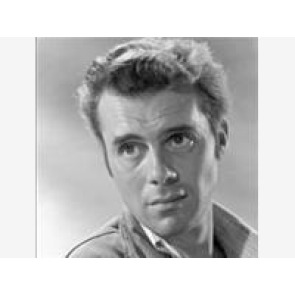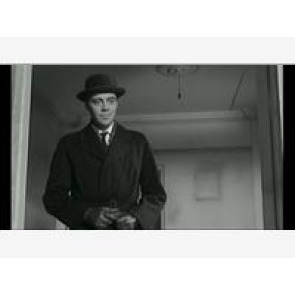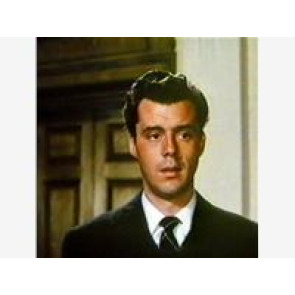SIR DIRK BOGARDESir Dirk Bogarde, who died on 8 May, 1999, was equally at home playing matinee idols or sinister ambivalent characters.
He was stylish and acclaimed, yet his acting range was limited and he often appeared in bad films. Sir Dirk's chilling appearance as a police murderer in The Blue Lamp was a contrast to the nervy and accident-prone Simon Sparrow in the Doctor series of comedies.
In later life he reinvented himself as a chic writer and first-rate chat show guest.
Derek Jules Ulric Niven van den Bogaerde was born on 28 March, 1921 in a taxi in Hampstead, the son of Ulric van den Bogaerde, the Dutch-born art editor of The Times , and Margaret Niven, a Scottish actress.
In childhood he saw little of his parents and was raised by his nanny. At an early age he began acting plays in the nursery with his sister Elizabeth.
Sir Dirk was bullied at school and after a scant education took a commercial art course at Chelsea Polytechnic, where he was taught by Henry Moore and Graham Sutherland.
His parents wanted him to become an artist or diplomat. He wanted to act and in 1939 managed to get a part as an extra in the in the George Formby comedy Come On, George. Soon he was in the West End as an office boy in J B Priestley’s Cornelius.
Sir Dirk was called up to the Army, served in Ensa (Entertainments National Service Association) and eventually became a major in intelligence: he was in Normandy for D-Day and witnessed the liberation of the Belsen concentration camp. Some of Sir Dirk's war drawings are now in the Imperial War Museum collection.
In 1946, Sir Dirk landed the part of a neurotic killer in the West End play Power without Glory, alongside Kenneth More. His first leading screen appearance was in Esther Waters (1947) and two years later came The Blue Lamp with Sir Dirk as the gunman who kills Jack Warner. The film spawned the legendary TV spinoff Dixon of Dock Green.
His big moment came as Simon Sparrow in Doctor in the House (1954), Doctor at Sea (1955), Doctor at Large (1957) and Doctor in Distress (1963). His female fans were so keen on this matinee idol, so the rumours went, that his fly-buttons were firmly sewn up at premieres.
Sir Dirk also made some memorable – and forgettable — films with the director Joseph Losey. The Sleeping Tiger (1954) — with Sir Dirk the neurotic criminal (again) was poorly received.
The Servant (1963), however, was highly regarded, with Sir Dirk playing Barrett, a sinister and camp manservant who ensalves his master. In 1964, he played an officer defending a deserter (played by Tom Courtenay) in the often harrowing King and Country.
Where the Doctor series made him a star, Victim (1961) galvanised his reputation as an actor. The film confronted homosexuality, exposed the evils of the laws against it, and won Sir Dirk plaudits for his bravery in tackling it.
Many presumed Sir Dirk was homosexual. He never admitted it, but lived for 20 years with his manager Anthony Forwood, former husband of the actress Glynis Johns (who played the children’s mother in Mary Poppins). “Ours was a totally platonic relationship,” he once said. “Tony was rather a puritanical figure who also happened to hate the idea of homosexuality.”
But Sir Dirk was beginning to get a taste for “unsavoury” roles, as he called them. After triumphing as the doomed and shrivelled Gustav von Aschenbach in Death in Venice (1971), he played a sadistic ex-SS officer in The Night Porter (1973). Some called it distasteful, but his performance was powerful.
Soon acting took a back seat and Sir Dirk devoted his energies to his home in Provence — and writing. A Postillion Struck by Lightning (1977), first volume in eight of his memoirs, was commissioned after a publisher saw him on a chat show. His reminiscences, like the rest life, were closely stage managed. He told only what he wanted and destroyed original material as he completed each volume.
In 1986 Forwood became ill and they left France for London. Sir Dirk was grief-stricken at his friend’s death in 1988 — which he described in A Short Walk from Harrods. In 1992 he was knighted and received a lifetime achievement award from the British Academy.
He suffered strokes in 1987 and 1996, and — confined to a wheelchair — died at his flat in Cadogan Gardens, Chelsea, on 8 May, 1999, a man who might have been born to play refugees from happiness.
Keep me informed of updates









